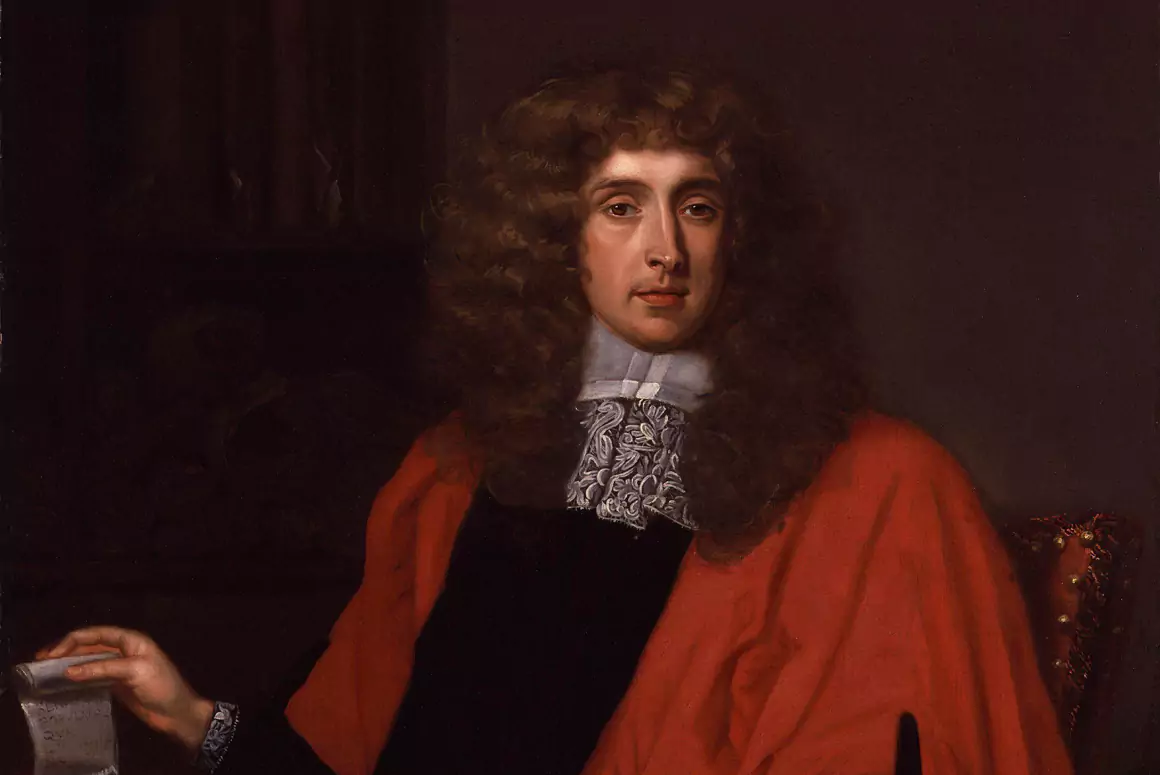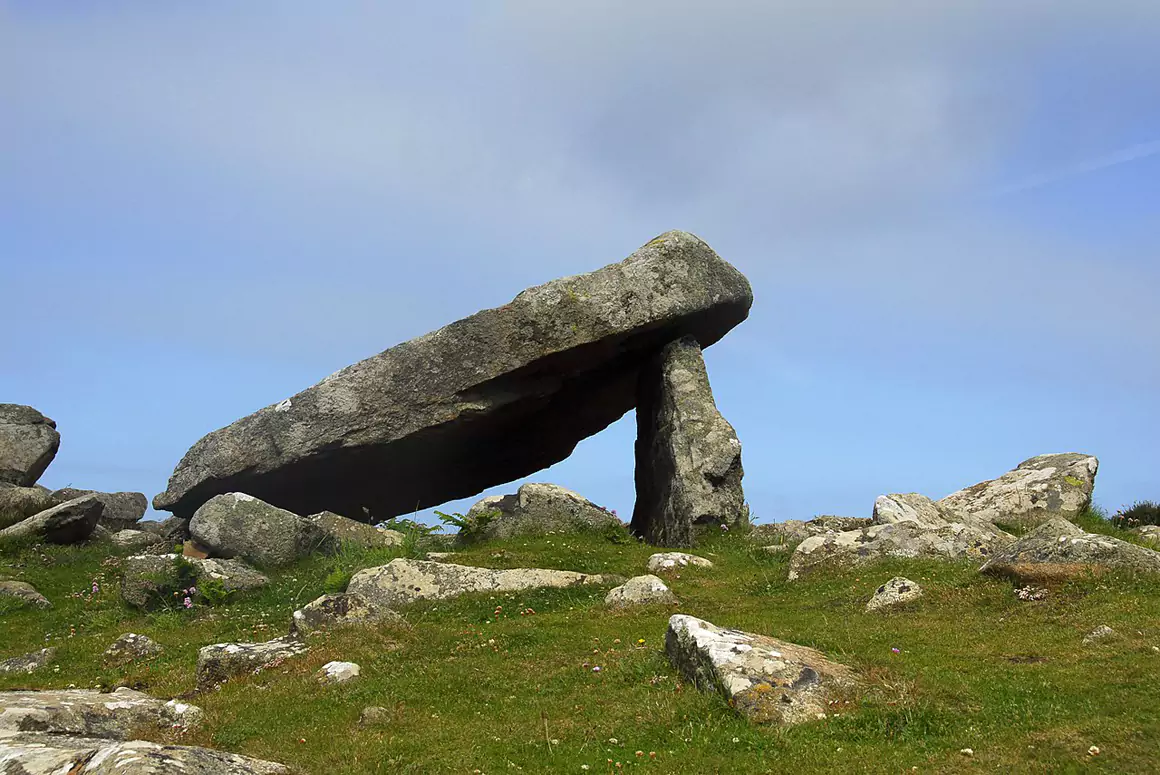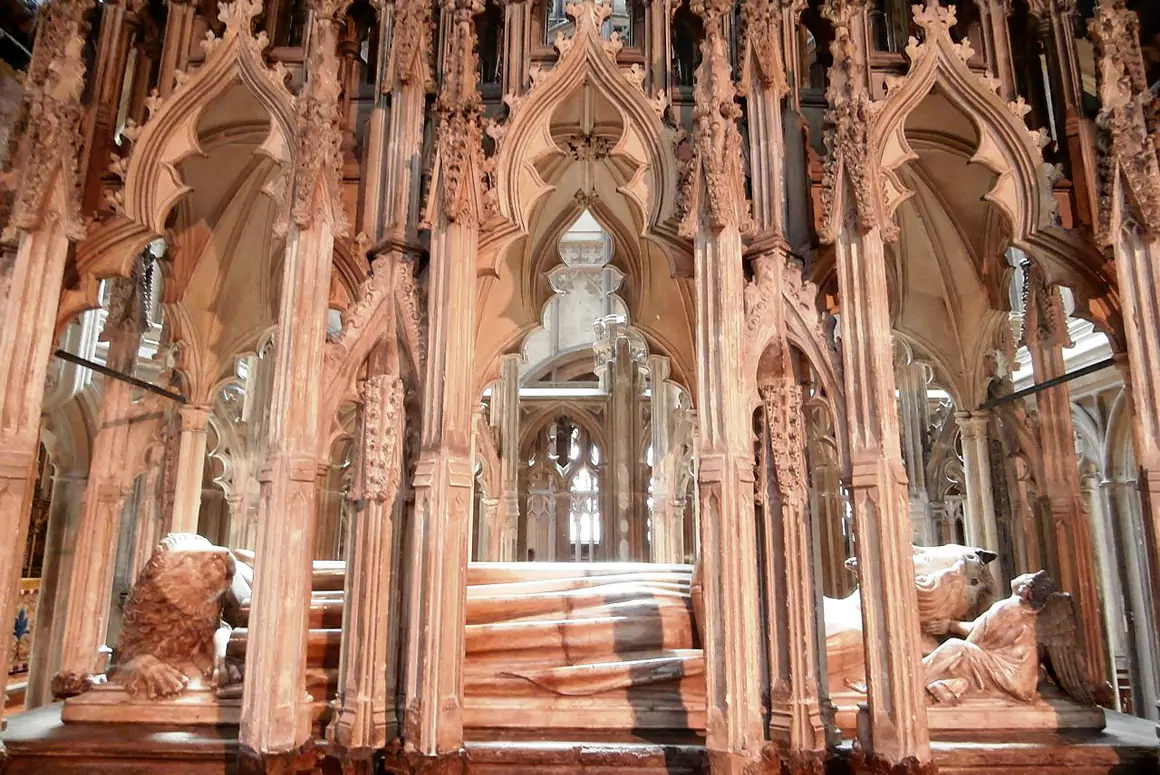![]()
Now I will describe what happened in detail, with more dates.
Caerleon was the largest, most powerful and richest of the 4 major cities in Roman Britain. It had a permanently stationed legion (Legio II Augusta) that was based there for more than 300 years from 75 A.D. until 382 A.D., when Caerleon’s governor, who was a Spaniard named Magnus Maximus, proclaimed himself as the Western Roman Emperor and then withdrew the bulk of the legion in order to defeat the incumbent Gratianus in Gaul (present-day France). The other 3 major Roman cities in Britain were York, Chester and London (London did not have its own dedicated legion but a powerful navy instead). The next governor in Caerleon quickly brought the skeleton force that remained there up to full strength with retired officers and local recruits. The new legion proved itself to be a powerful army exactly 100 years later (see below).
Caerleon was also the main centre of pilgrimage in Roman Britain from 313 A.D. onwards until 700 A.D. Constantine had decreed with his Edict of Milan in 313 A.D. that the Christian religion could be practised freely throughout the empire; thereby ending the persecution of Christians which Diocletian had begun in 304 A.D. (Diocletian committed suicide in 308 A.D. but the persecution continued unabated nevertheless). It was during the first year of this persecution that two inhabitants of Caerleon, namely Saint Aaron⁶ (a Welshman and honorary Roman citizen who had been baptized with this biblical name when an adult) and Saint Julius (a Roman by birth with this typically Latin name) were executed by decapitation in Caerleon’s amphitheatre in 304 A.D. Incidentally, a Roman soldier called Saint Alban was decapitated in the same year and for the same reason in another amphitheatre* in the town of Verulamium, 25 miles north of Londinium (London); the small town which Saxons subsequently built nearby was named St. Albans in remembrance of him.
The Christian citizens of Roman Caerleon immediately reorganized themselves following Constantine’s decree and they built the Cathedral of Saint Aaron with a monastery attached to it, as well as the Basilica of Saint Julius⁷ (‘ecclesia matris’ in Latin, which means ‘mother church’ and it was subordinate only to the cathedral) with its associated convent as soon as possible, in order to house the shrines containing the mortal remains of Saint Aaron and Saint Julius respectively. I estimate as an architect that it took them between 5 and 10 years to build these two churches in brickwork or stone masonry, i.e., they had both been consecrated by roughly 325 A.D. Caerleon was already a very prosperous capital city due to its exports of tin products and other merchandise before its wealth increased considerably because of generous donations from the constant streams of pilgrims, to such an extent that one Welsh text referred to the roofs of these two holy buildings as being gilded!
Let’s jump forward in time by two entire centuries to 526 A.D. Saint Gildas⁸ (see above) delivered a superbly eloquent Latin sermon that he entitled ‘De Excidio et Conquestu Britanniae’ meaning the ‘Ruin(ation) and Conquest of Britain’ in Saint Aaron’s Cathedral, in which he criticized the deteriorating social situation – including some corrupt clergy and bickering petty kings, among others – and he especially targeted Caerleon’s vicious and inept governor of his time, namely Aurelius, by calling him “the lion’s whelp”, which was a sarcastic jibe and a comparative reference to his grandfather Ambrosius Aurelianus⁹, whom Gildas also described admiringly as “the Last of the Romans”. Ambrosius was the great governor who had led the reconstituted legion from Caerleon to Mons Badonicus (Cadbury Hill, which is 2 miles from the present village of Sparkford in central Somerset) to fight a Saxon army which was besieging that strategic fortress and the town within its walls. Ambrosius won the battle and his cavalry contributed greatly to routing the Saxons: they did not return for another 55 years! That momentous event happened in 482 A.D., which was the same year as when Saint Gildas was born, as he actually mentions in his sermon and he also says meticulously that “I am composing this sermon in the 44th year of my life with one month now expired”.
* The amphitheatre was built somewhere near Verulamium but outside the urban area: recent archaeological excavations did not find its remains.
Well then, Saint Gildas’ sermon incensed Aurelius so much that this evil governor decided to execute him for treason. Gildas was saved by the Arch-Bishop of Caerleon and Wales, namely Saint Dubricius (mentioned in the Book of Llandaff), who immediately sent him on a spurious mission to Ireland, where the Christian faith was apparently flagging following Saint Patrick’s evangelization of the Irish.
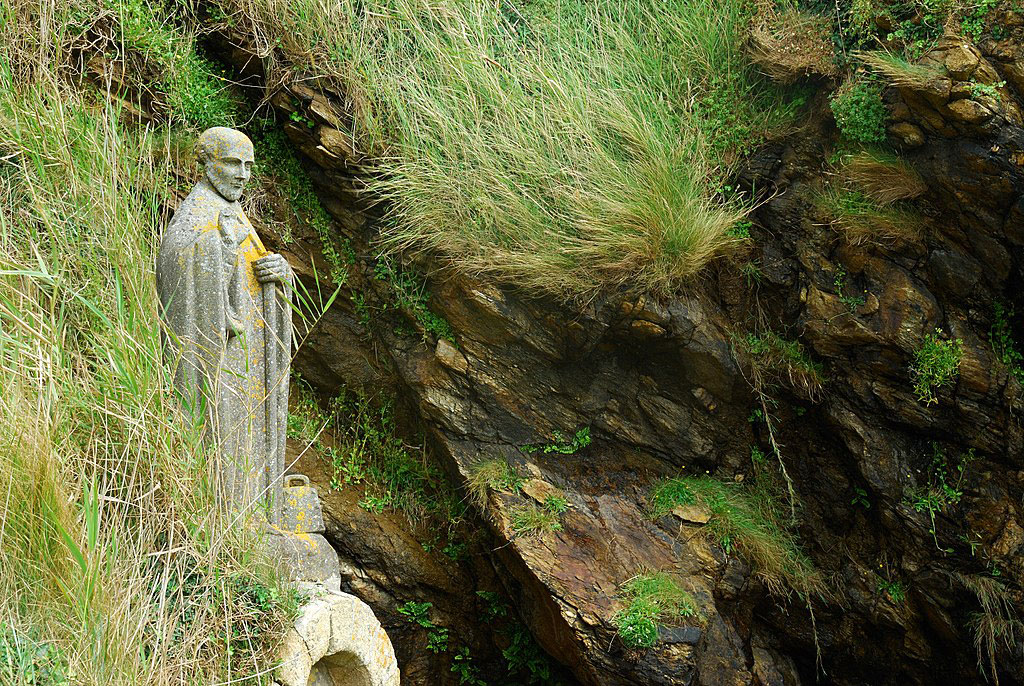
Incidentally, the record about Saint Patrick needs to be set straight at this juncture. He was a Welshman not an Irishman and he spent most of his life converting the Irish to Christianity from the age of about 30 until he died there on 17th March 493 A.D. when he was 92. Although Saint Patrick died in his own church, which was a former barn that his first important convert King Dichu gave to him as his religious base, he was buried “where the oxen pulling the cart carrying his body shall stop” on the top of Dun Lethglaise, which was a Celtic fort on the presently called Hill of Down, near a town that was then named after him as Dun Padraig (‘Patrick’s stronghold’) in the Irish language and it is now known as Downpatrick in Northern Ireland.
The so-called Irish Annals state that “the relics of Saint Patrick were placed sixty years after his death in a shrine by Colum Cille” in 553 A.D. Unfortunately, the church which probably housed that shrine was destroyed during Cromwell’s invasion of Ireland 11 centuries later.
Cille was an Irish abbot from Derry in what is now called Northern Ireland, who is reputed to have evangelized the ‘Scotii’ tribes (Latin for Scots) who lived there. Then he moved with his 12 followers to the Isle of Iona in the Inner Hebrides off the western coast of Scotland, which was part of the Dál Riata tribe’s Kingdom of Ulster (i.e., Northern Ireland), where he founded an abbey. He died there on 9th June 597 at the age of 75. Colum Cille was sanctified as Saint Columba and he is the patron saint of Derry.
Actually, the Dál Riata tribe of Scots had already begun to colonize the western coast of Scotland (Caledonia) from Ireland (Hibernia), starting in about 300 A.D., when they were still pagans of course: the Romans distinguished between them and their traditional enemy, i.e., the natives of what is now called Scotland, namely the Picts, who constantly resisted the Roman occupation on the other side of Hadrian’s Wall (and the less robust Antonine’s Wall farther north of it). Further Scottish tribes migrated from Ireland to western Scotland during the 5th and 6th centuries, then they spread eastwards during the following 9 centuries to eventually dominate the Picts’ stronghold of eastern Scotland, including Edinburgh.
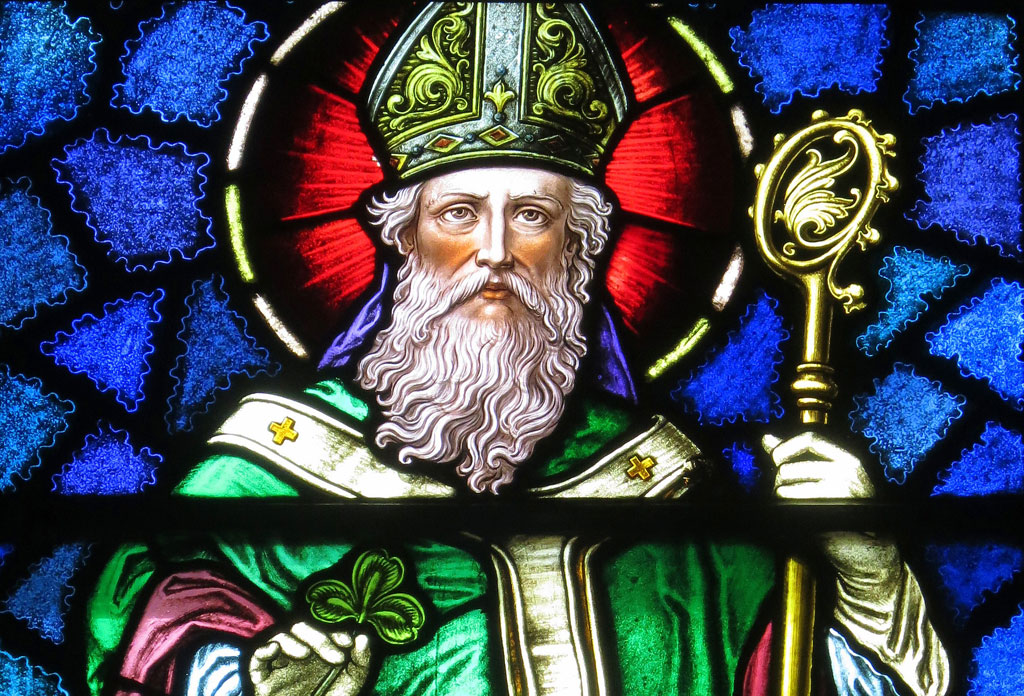
“Patrick”, as the world knows him, was a Romano-Briton who was born with the name of Maewen Suchat in 401 A.D. (his parents had married in the previous year). He was the eldest son of a prominent civil and military leader called Calpurnius, who was the head of the family (paterfamilias in Latin) at his villa called Banna Venta Burniae, which means “meeting place of the Burniae (a Welsh sub-tribe) near the bluff” in the north of present-day Glamorgan. The Latin word of ‘villa’ referred to a mansion with its own agricultural estate and a dependent village in the vicinity. The town that developed from the village over the centuries is called Banwen nowadays and the feast day of Saint Padraeg (he was renamed when converting to Christianity as an adult at the age of about 22) is still celebrated there every year. Sadly, the remains of his family home have never been found, which could be due to the fact that the ground around Banwen was extensively disturbed during the industrial revolution when it became an important centre of the Welsh iron and coal industry. However, I believe that the villa was located quite a long way from the present town: that is to say, very “near the bluff”. That theory remains to be proved of course.
Only two of Patrick’s numerous letters have survived and both of them were written in Latin. Therefore, Patrick always referred to himself as Patricius in them. These letters are the auto-biographical ‘Declaration’ (Confessio in Latin) – which is enthralling to read – and the ‘Letter to the soldiers of Coroticus’ (Epistola in Latin), which is a devastating tyrade against Coroticus. Patrick wrote this second letter around 450 A.D. after he had already spent many years in Ireland on his Christian mission. Coroticus is the name that Patrick used in Latin for a heathen Irish warlord and cruel landowner who regarded Patrick and his evangelizing activities as undermining his own power. Patrick’s letter chastized him and his soldiers (we would simply call them thugs!) for murdering or enslaving many of the Irish whom Patrick had already converted to Christianity and he demanded their liberty. Whether Coroticus heeded Patrick’s advice is unknown but highly unlikely! By the way, Patrick’s command of the Latin language was far inferior to that of Saint Gildas.
References
6. Gildas refers in his De Excidio et Conquestu Britanniae to the martydom of Saint Aaron and Saint Julius in Caerleon and he mentions their shrines there. The Book of Llandaff (Liber Landaensis in Latin and Llyfr Llan Dav in Welsh) mentions “the lands of the martyred Saint Julius and Saint Aaron” (in Latin: territorium sanctorium martirium julii et aaron) lying to the west and east of Caerleon.” Bishop Nudd’s manuscript in the Book of Llandaff also mentions “… all of the territory of the holy martyrs Julius and Aaron, which of old time belonged to Saint Dubricius.” Gruffydd ab Athrwys similarly wrote “Two illustrious churches were dedicated to their memory [Aaron and Julius] and adorned with a convent of nuns and a society of regular canons, which were among the glories of Caerleon that passed away.” Gruffydd ap Athrwys also commented in Chapter 5 of his Historia Regum Britanniae (written in about 1160) when referring to the sepulchres of the martyrs Aaron and Julius that “the impiety of barbarians [i.e,, Saxons] has deprived us of them.” Gerallt Gymro (Gerald of Wales) records a much earlier text when he wrote in his Journey through Wales (Itinerarium Cambraie) in 1188, that “Julius and Aaron, having suffered martyrdom, were buried in this city [of Caerleon] and each had a church dedicated to them. After Albanus and Amphibalus they were esteemed as the chief proto-martyrs of Britannia Prima. In ancient times there were three fine churches in this city: dedicated to Julius the martyr, graced with a choir of nuns; another to Aaron, his associate, and enobled with an order of canons; and the third distinguished as the Metropolitan [Church] of Wales. Amphibalus, the instructor of Albanus, was born in this place. Ths city is situated on the River Usk, navigable to the sea, and adorned with woods and meadows. ….” Gerallt also describes the extensive ruins of Roman Caerleon meticulously, which still existed in his time and were typical of a large Roman city, as follows: “Many remains of its former magnificence are still visible; splendid palaces with their gilded roofs which once emulated the grandeur of Rome, for it [i.e., Caerleon] was originally built by the Roman princes, and adorned with stately edifices; a gigantic tower [the amphitheatre?], numerous baths, ruins of temples and a theatre, the walls of which are partly standing. Here we still see subterranean buildings, acqueducts and vaulted cellars both within and without the walls [of the city]; and what appeared to me most remarkable, stoves so excellently contrived, as to diffuse their heat through secret and imperceptible passages.” [the hypocaust central heating system].
7. Bonedd y Sant (Descendency of Saints), compiled in the 11th century from sources of the 6th and 7th centuries.
8. De Excidio et Conquestu Britanniae by Saint Gildas and Historia Brittonum by Nennius, in chapter 48 of which Ambrosius Aurelianus is called “the king of kings in Britain”. Nennius also lists Caerleon as one of the 33 cities in Roman Britain.
9. Englynion y Beddau (in the Black Book of Carmarthen) and the Annales Cambriae record the Battle of Cad Cadlam taking place in 537 A.D.



